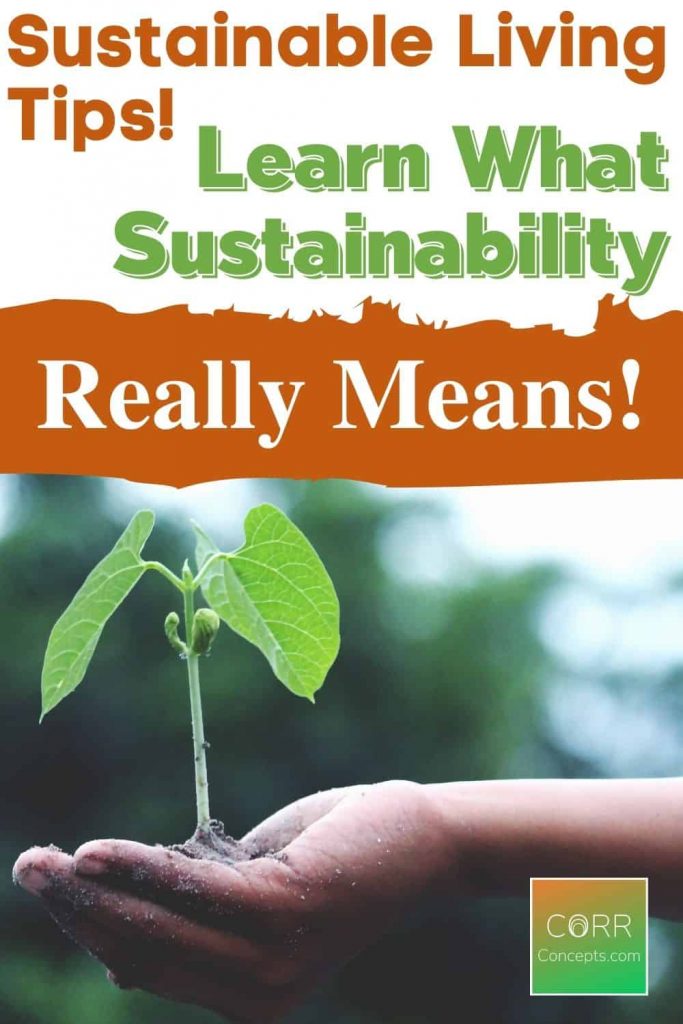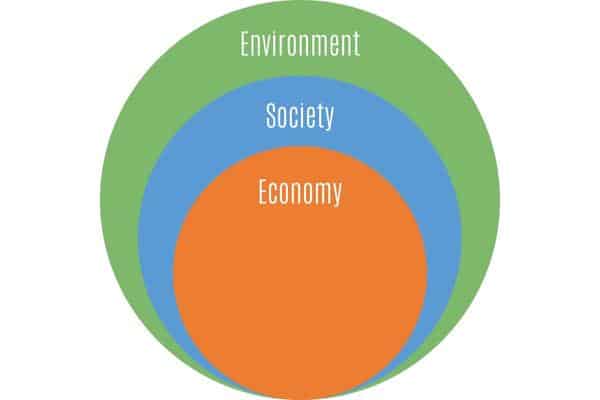
WHAT IS SUSTAINABILITY?
Learn what sustainability really means and what it means for a healthier lifestyle and environment for all.
This site contains affiliate links for your convenience. The goal is to first provide links to eco-friendly, ethical, and sustainable brands, and then to those same type brands that use Amazon (i.e., Climate Pledge Friendly Certification), if possible. Therefore, you may see multiple links for one option. Should you make a purchase through any link, I will receive a small commission at no additional cost to you. See my Disclaimers & Disclosures and Privacy Policy for more information.
Like this? Share it with others!
Sustainability 101: Enter Sustainability
A lot of people are confused on the concept of “Sustainability”. The term has been thrown around loosely – a lot of it used for marketing purposes, in which there is no problem doing so just as long as it is done correctly.
Sustainability is not just a buzzword. It has a real meaning. It comes from the term, “Sustainable Development”, which was defined in 1987 by the Brundtland Commission (formerly the World Commission on Environment and Development) in its “Our Common Future” report (a.k.a. the Brundtland Report) as the, “Development that meets the needs of the present without compromising the ability of future generations to meet their own needs.”
That’s it. It’s pretty simple, and the concept of sustainability not only can be used in business and manufacturing systems but also on an individual level.
Sustainability applies to us all.
Sustainability 101: The 3 Components of Sustainability
As I’ve pointed out earlier, our current, failing system focuses solely on the financial bottom line where the economy has taken precedence over all other things (society and environment).
With sustainability, the focus of success is no longer on one, financial bottom line (like the stock market indicates). Success is now focused on three bottom lines: planet, people and profit.
It makes no difference whether you say, “environment, society, economy”, “environmental, social, financial”, or “planet, people, profit”. They all represent the same sustainability model for business and living.
Why should just the financial component of business be the sole indicator of success when businesses cannot operate without people or the planet? Sustainability professionals call this new model of success the “triple-bottom line”.
Overlapping Dependency Sustainability
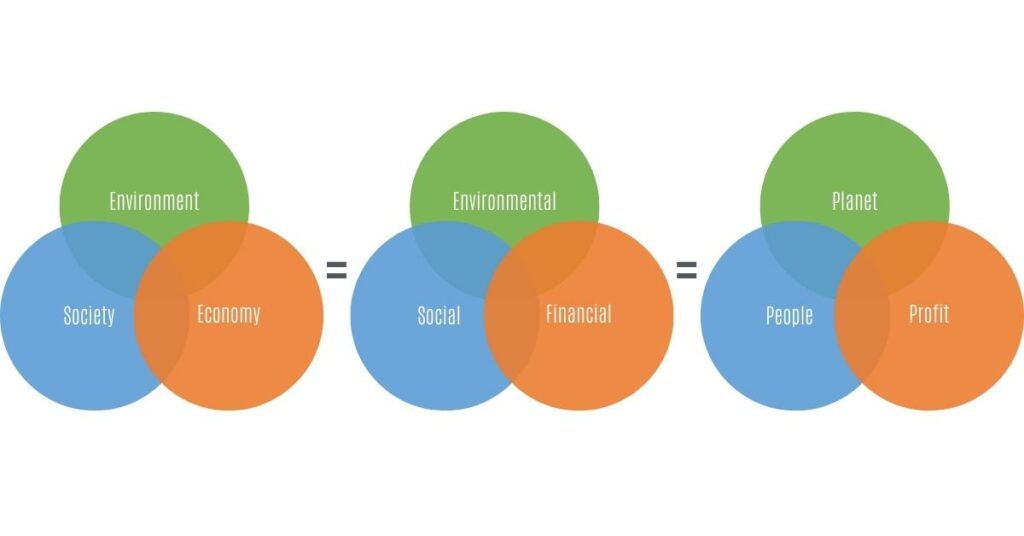
Some sustainability professionals subscribe to the “overlapping dependencies” sustainability model (seen in the above diagrams), which indicate that the nexus of the overlapping components represents achieving sustainability.
This could be true; however, with this model the sustainability components could be unequally applied or act independently, thereby skewing the ability to reach true sustainability.
Nested Dependency Sustainability
As a sustainability professional, I subscribe to The Natural Step‘s view of the “nested dependencies” sustainability model (see diagram below) because it demonstrates that the environmental, social and financial components are inter-dependent of one another.

To explain, an economy cannot exist without people. We created it, after all! Can people live without an economy? Technically, yes. This is why “Economy” is nested inside the “Society”, or “Social”, component indicating its dependency on people to exist.
Now, can people live without an environment? No! Without Earth, where would we live? Mars?
Can the environment live without people? Yes! This world will keep spinning with or without us. So, the “Society” component is nested within the “Environment” component.
Therefore, if the economy relies on people, and people rely on the environment, then where should we be placing our priorities in living and business practices? Yes, the environment.
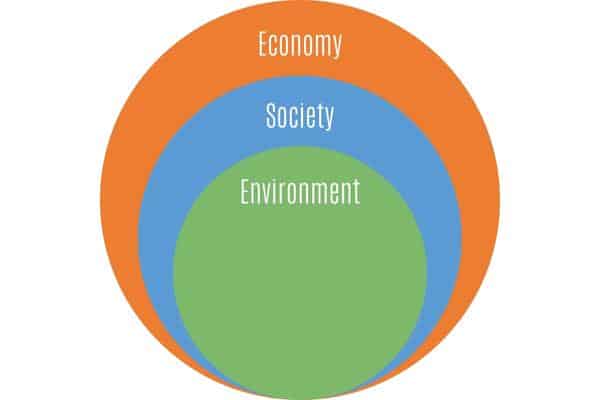
To move towards a sustainable future, we need to shift our old, failing system to a new way of placing importance on the bigger picture, Environment, first, with the Social and Economy components in the scale with which they belong. Yep, it needs to be flipped up-side-down. After all, when there is a healthy environment, a healthy society and economy will follow.
No, I’m not naive. There are some people who make a lot of money on the current, failing system who will not want to change it. Why rock their apple cart, right?
Yet, they are only the 1%, right? I say we think and act on what’s best for all of us. The power lies with us.
Goal of Sustainability
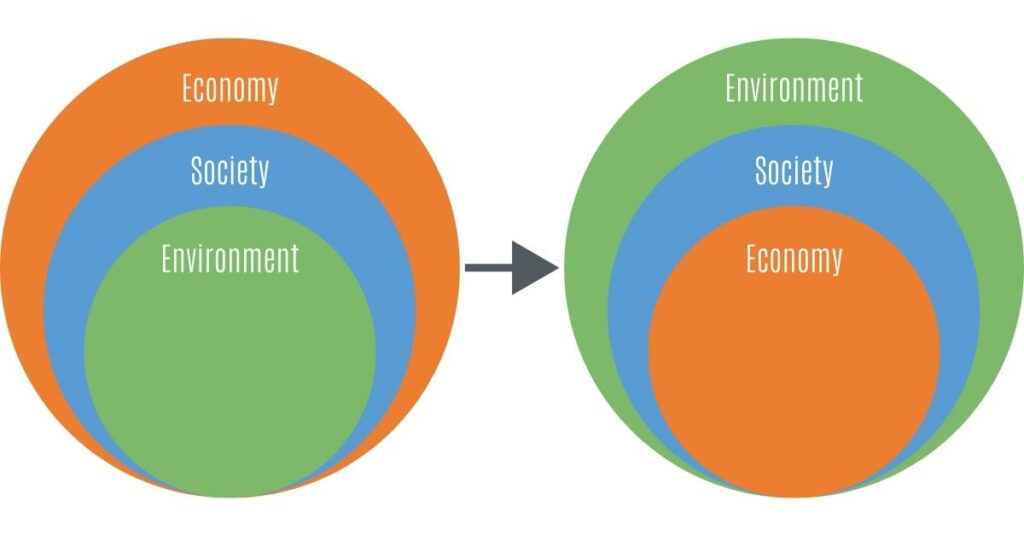
I know, I know… this is not all going to change overnight. We live within a complex society with complex systems. However, we do need to start somewhere, and I believe if everyone did their part individually to be informed and take action, we will move forward and build momentum towards a more sustainable and healthy existence.
Ready to move forward? Take the next step to find out why environmental sustainability is important.

